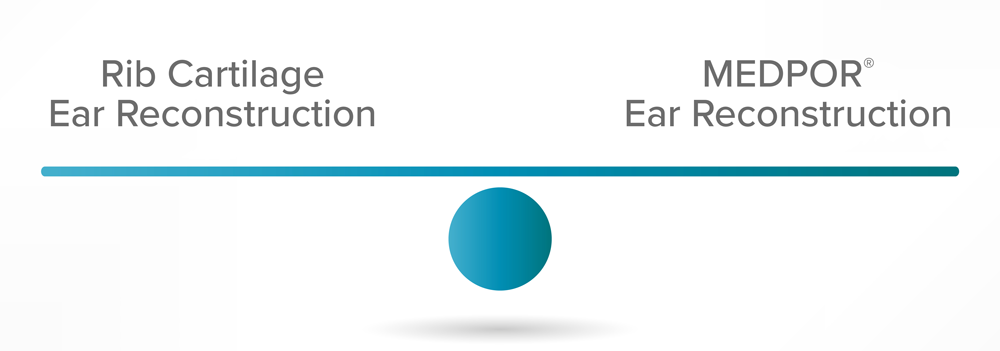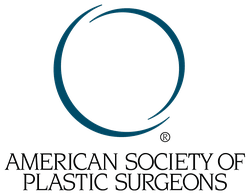Rib Cartilage Ear Reconstruction vs. MEDPOR®
If you are considering ear reconstruction surgery for microtia, injury, or another deformity, it is important to weigh the different treatment options available and determine, with the help of the surgeon, which option is best for you and your situation. Choosing between a rib cartilage framework and a polyethylene framework (MEDPOR®) is an important decision. Dr. Charles Thorne will explain the advantages and disadvantages of each treatment during your appointment at his New York, NY, office and recommend a treatment plan based on a careful evaluation of your needs. In most cases, Dr. Thorne prefers to use the patient’s own tissue. However, there are some cases in which using the artificial material is the best choice.

Dr. Thorne can help patients weigh benefits of the two techniques to arrive at an informed decision.
Understanding Key Differences
The main differentiating factors between these two treatment options is the material used to fashion the framework and the need for scalp tissue. With rib cartilage ear reconstruction, Dr. Thorne uses the patient’s own cartilage tissue from the rib cage to sculpt a new ear framework. Because the framework is made from the patient’s own tissue, it can be covered with the skin in the area and does not require tissue from the scalp.
The MEDPOR technique uses high-density polyethylene to create the framework. Because the framework is a hard form of plastic, it must be covered with a thin layer of tissue from the scalp called a fascial flap and a skin graft on the surface of the fascia.
Age and Eligibility
Dr. Thorne can perform MEDPOR ear reconstruction on children as young as three years old but prefers to wait until age eight to 10. For the rib cartilage technique, there is no choice but to wait until age eight to 10 because the cartilage must be large enough to create the framework.
Number of Surgeries
A typical ear reconstruction with rib cartilage framework or polyethylene (MEDPOR) framework requires at least two surgical procedures separated by several months.
Dr. Thorne believes the best option is to use the patient’s natural tissue whenever possible. However, he recommends MEDPOR reconstruction if the patient’s rib cartilage has already been harvested in previous attempts at ear reconstruction.
Discomfort and Scars after Surgery
Rib cartilage reconstruction is associated with discomfort in the chest donor site for several days. The MEDPOR technique, on the other hand, does not involve as much pain. However, it does result in scarring on the scalp from the fascial flap and scars behind the other ear to obtain the skin graft. So, each technique carries its own disadvantages
Durability and Longevity
When it comes to ear reconstruction, the most durable and lasting results come from using natural, living tissue. Rib cartilage frameworks are more resistant to trauma, feel more lifelike, and can last a lifetime. The long-term lifespan of MEDPOR is unknown, as the product has only been used for ear reconstruction since 1991.
The Benefits of Using Living Tissue
While MEDPOR is a good solution for some patients, Dr. Thorne believes the best option is to use the patient’s own tissue whenever possible. MEDPOR is a foreign material. The hard plastic often feels unnatural or uncomfortable and will always carry the risk of exposure, infection, or in extreme cases, complete loss of the framework. Once the rib cartilage framework is in place, it heals like any natural tissue and can provide lasting results with a lower risk of complications.
Find the Right Treatment for You
The best way to find out which type of ear construction is right for you is to schedule an appointment with Dr. Thorne. He can examine your or your child’s ear and determine which material is best suited to your unique needs. For more information about the differences between rib cartilage ear reconstruction and reconstruction with a plastic framework, contact the office online or call (212) 794-0044.
START YOUR INQUIRY!
Related Articles

Dr. Thorne is the Editor-in-Chief and the author of several chapters in Grabb and Smith's PLASTIC SURGERY, 7th Edition.












